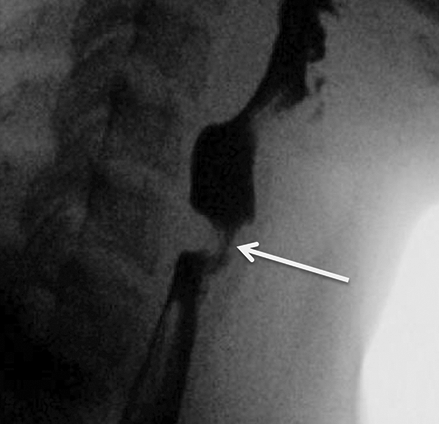The human body is a complex system of organs and muscles that work together to perform critical functions. The pharynx, a muscular tube that transports food from the mouth to the esophagus, is an important element of this system. The cricopharyngeal muscle, which is shaped like a ring and is located inside the pharynx, is an important muscle that controls food transit. Cricopharyngeal achalasia is a disease that can develop when this muscle malfunctions.
Cricopharyngeal Muscle Anatomy
The pharynx is a muscular tube found beneath the nasal cavity, mouth, and larynx. It connects the nasal and oral cavities to the esophagus, acting as a route for both air and food. The cricopharyngeal muscle, commonly known as the upper esophageal sphincter, is found within the pharynx at the head of the esophagus. Its main job is to relax and open during swallowing to let food enter into the esophagus, then close to stop stomach acid and undigested food from coming back up.

Cricopharyngeal Achalasia Symptoms
Dysphagia, or having trouble swallowing, is one of the main signs of cricopharyngeal achalasia. Individuals suffering from this illness may feel a sensation of food sticking or becoming lodged in their throat, causing discomfort and irritation. Another typical symptom is the globus sensation, which occurs when a person experiences a prolonged lump or foreign body sensation in the throat despite the absence of any physical restriction. Inadequate food consumption may also result in regurgitation of undigested food, weight loss, and malnutrition.
Cricopharyngeal Achalasia Causes
Cricopharyngeal achalasia can be caused by a number of factors.
The cricopharyngeal muscle's ability to contract normally can be interfered by neurological disorders like Parkinson's disease or stroke. Hypertrophy or scarring of the cricopharyngeal muscle might impair its function. This problem may also be exacerbated by age and the degenerative changes that occur in muscular tissue.
Cricopharyngeal Achalasia Diagnosis
A full evaluation by a healthcare professional is required for the diagnosis of cricopharyngeal achalasia. Physical examination techniques may be used to assess the general function of the pharynx and to look for any apparent evidence of abnormalities. Additional diagnostic procedures, such an endoscope or a barium swallow, enable the visualization of the swallowing process and the detection of any structural anomalies. Manometry is a specific test that assesses the pharynx's pressure and muscle activity.
Cricopharyngeal Achalasia Treatment
The severity of the symptoms and underlying reasons determine the cricopharyngeal achalasia therapy strategy. Speech therapy and dietary changes are examples of non-surgical therapies that work to enhance swallowing function and reduce discomfort. Botulinum toxin injections may be used in some circumstances to temporarily paralyze the cricopharyngeal muscle and provide comfort. Cricopharyngeal myotomy surgery, on the other hand, may be advised for people who have chronic and severe symptoms. To enhance swallowing function, the cricopharyngeal muscle is partially removed or reshaped during this surgical surgery.
Cricopharyngeal Achalasia ICD-10
Cricopharyngeal achalasia is a type of achalasia, which is a disorder that affects the ability of the esophagus to move food toward the stomach. The ICD-10-CM code for achalasia of the cardia is K22.0. However, there is no specific ICD-10-CM code for cricopharyngeal achalasia. Instead, it may fall under the category of "other diseases of pharynx" (J39.2) or "cricopharyngeal dysphagia.








0 Comments